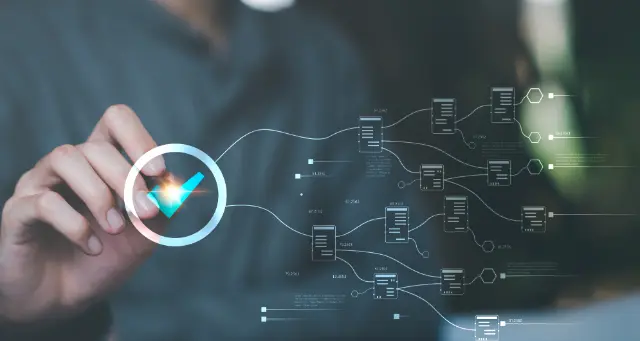Transforming Retail Competitive Analysis and Market Research with Automation
In today’s fast-paced retail landscape, businesses face the constant challenge of staying ahead of the competition and understanding the ever-changing market dynamics. Competitive analysis and market research automation has emerged as a game-changer, enabling retailers to gather, analyze, and interpret data with unprecedented efficiency and accuracy.
By leveraging the power of Python, AI, and cloud-based solutions, retailers can automate key tasks in the competitive analysis and market research process, freeing up valuable time and resources. This transformative approach streamlines data collection, automates sentiment analysis, detects trends in consumer behavior, and provides real-time insights through automated dashboards.
Embracing automation empowers retailers to:
- Gather data from multiple sources, including competitor websites, social media platforms, and industry reports
- Analyze consumer sentiment and identify emerging trends through AI-powered natural language processing
- Create automated dashboards that provide real-time insights into competitive strategies and market opportunities
- Make informed decisions based on data-driven insights, enabling a competitive edge in the retail industry
Competitive Analysis and Market Research Automation is not just a buzzword; it’s a strategic imperative for retailers looking to thrive in the digital age. By embracing automation, businesses can gain a deeper understanding of their competitors, anticipate market shifts, and make data-driven decisions that drive growth and success.

Python, AI, and the Cloud: Powering Competitive Analysis and Market Research Automation
Python is a versatile programming language that plays a crucial role in competitive analysis and market research automation. Its simplicity and extensive library support make it ideal for developing both unattended and attended bots.
Unattended bots, powered by Python, can automate repetitive tasks such as data scraping, data analysis, and report generation. These bots can run 24/7 without human intervention, freeing up valuable time for analysts to focus on more strategic initiatives.
Attended bots, also built with Python, provide real-time assistance to analysts during market research and competitive analysis. These bots can perform tasks such as data validation, sentiment analysis, and trend identification, enhancing the accuracy and efficiency of the research process. The level of customization available when building attended bots with Python allows businesses to tailor them to their specific needs.
Cloud platforms offer a comprehensive suite of features that surpass traditional RPA/workflow tools orchestrators. They provide scalable infrastructure, advanced analytics capabilities, and seamless integration with other business applications. This makes cloud platforms ideal for managing complex automation workflows and handling large volumes of data.
AI plays a vital role in improving the accuracy and handling edge cases in competitive analysis and market research automation. AI techniques such as:
- Image recognition can analyze visual data, such as competitor product images, to extract valuable insights.
- Natural language processing (NLP) can analyze unstructured text data, such as consumer reviews and social media posts, to identify sentiment and extract key information.
- Generative AI can generate new data or content, such as synthetic data sets for training models or automated report summaries.
By leveraging the power of Python, AI, and the cloud, businesses can transform their competitive analysis and market research processes. This transformative approach enables retailers to gain a deeper understanding of their competitors, anticipate market shifts, and make data-driven decisions that drive growth and success.

Building the Competitive Analysis and Market Research Automation with Python and the Cloud
The competitive analysis and market research automation process using Python and the cloud involves several key steps:
- Data collection: Python scripts can be used to automate the scraping of data from online sources, such as competitor websites, industry reports, and social media platforms. This data can be stored in a centralized cloud repository for easy access and analysis.
- Data analysis: Cloud-based AI services can be utilized to analyze the collected data. NLP techniques can extract insights from unstructured text data, while image recognition can analyze visual data. These insights can be used to identify trends, patterns, and competitive advantages.
- Visualization and reporting: Automated dashboards can be created using Python and cloud visualization libraries. These dashboards provide real-time insights into competitive strategies and market opportunities, enabling stakeholders to make informed decisions.
Data security and compliance are of utmost importance in the retail industry. Python and cloud platforms offer robust security features to protect sensitive data and ensure compliance with industry regulations.
Advantages of using Python over no-code RPA/Workflow tools:
- Flexibility and customization: Python is a versatile language that allows for greater flexibility and customization in automation workflows. This is especially valuable for complex and evolving automation requirements.
- Integration with AI and cloud services: Python seamlessly integrates with AI and cloud platforms, enabling the development of sophisticated automation solutions that leverage advanced analytics capabilities.
- Open source and community support: Python is an open-source language with a large and active community. This provides access to a wealth of resources, support, and pre-built libraries.
Algorythum’s approach:
Unlike many BPA companies that rely on pre-built RPA tools, Algorythum takes a different approach. We leverage Python and the cloud to build custom automation solutions tailored to the unique needs of our clients. This approach addresses the limitations of off-the-shelf automation platforms and ensures optimal performance and scalability.

The Future of Competitive Analysis and Market Research Automation
Competitive analysis and market research automation is a rapidly evolving field, with new technologies emerging all the time. Here are some potential possibilities for extending the implementation to enhance the proposed solution:
- Integration with IoT devices: IoT devices can provide real-time data on customer behavior, preferences, and trends. This data can be integrated into the automation process to provide even more granular insights.
- Use of blockchain technology: Blockchain technology can be used to create secure and transparent data sharing networks. This can facilitate collaboration between different stakeholders in the competitive analysis and market research process.
- Adoption of quantum computing: Quantum computing has the potential to revolutionize data analysis by enabling the processing of massive data sets in near real-time. This can lead to even more powerful and accurate insights.
By staying abreast of these emerging technologies, businesses can future-proof their competitive analysis and market research automation initiatives.
Subscribe to our newsletter to receive the latest updates on industry-specific automation trends and best practices.
Contact our team today to schedule a free feasibility assessment and cost estimate for your custom automation requirements. We look forward to partnering with you to drive growth and success through innovative automation solutions.

Algorythum – Your Partner in Automations and Beyond
At Algorythum, we specialize in crafting custom RPA solutions with Python, specifically tailored to your industry. We break free from the limitations of off-the-shelf tools, offering:
- A team of Automation & DevSecOps Experts: Deeply experienced in building scalable and efficient automation solutions for various businesses in all industries.
- Reduced Automation Maintenance Costs: Our code is clear, maintainable, and minimizes future upkeep expenses (up to 90% reduction compared to platforms).
- Future-Proof Solutions: You own the code, ensuring flexibility and adaptability as your processes and regulations evolve.









